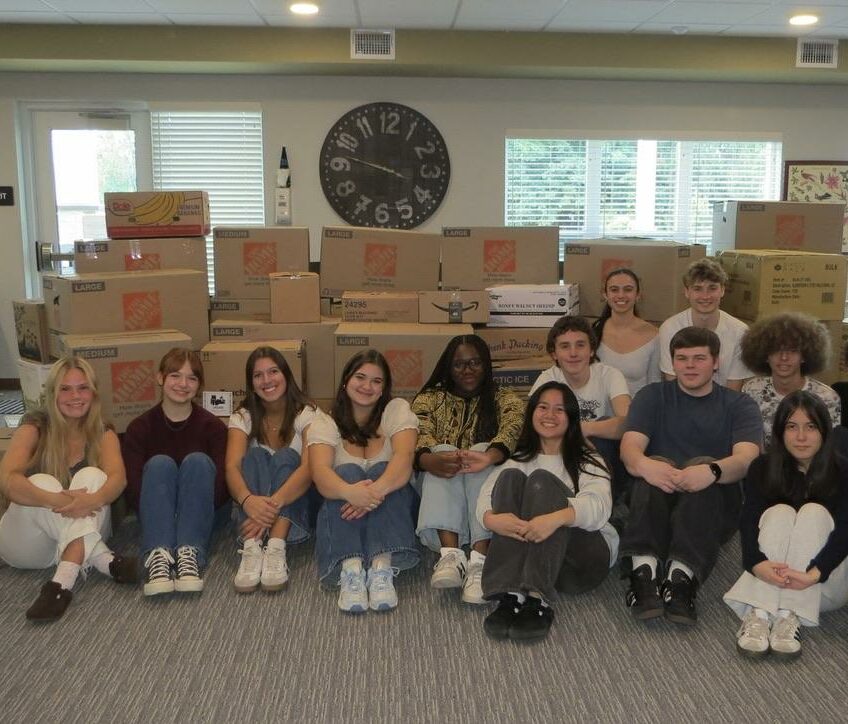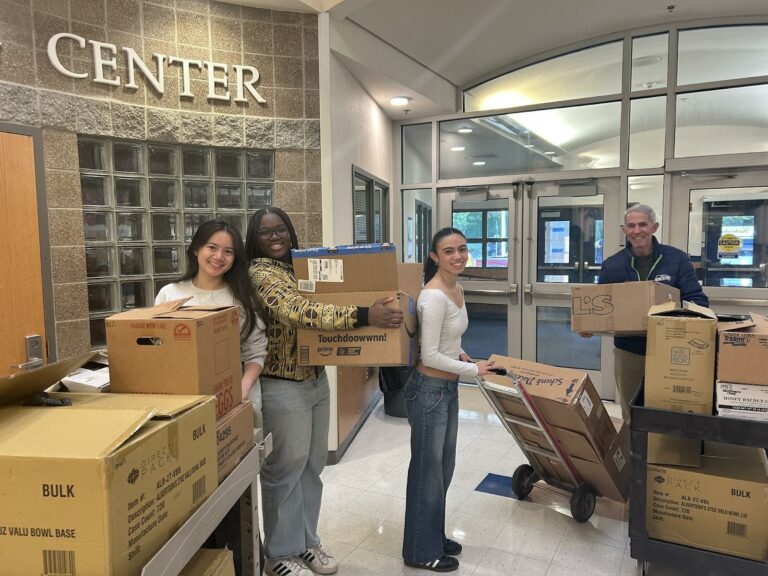Vy Le is Changing How We Donate to Shelters
In WA, Vy and her team are turning clothing drives into acts of care
October 27, 2025
Share
Vy Le is a 2025 Carnegie Young Leader and the team lead for WhereWear, a youth-run project in Olympia, WA that’s making clothing donations more intentional and respectful. It all started with a conversation with her cousin, who was staying at a women’s shelter and needed something to wear for a job interview. One outfit turned into a community effort to make sure shelters get exactly what they need.
How did your project start?
I visited my cousin, who was staying at a Seattle women’s shelter, and I got to talk with her and her friends, and one thing she talked about was clothing. She had a job interview coming up, and her shelter didn’t have any professional attire. I went home, grabbed my DECA business clothes, and brought them back for her. That was the start. Then I realized, okay, that’s just one interview outfit—how can I help more? So we hosted a neighborhood clothing drive. After talking with the shelter staff, they told us that while they appreciated general donations, what they really needed were specific items. That launched us into fundraising for socks and underwear (which they can’t take used) and hosting specialty targeted drives.
How is your model different from a typical clothing drive?
We do it differently. We collect the clothing, but then we hold events where we sort everything by type, check for stains or holes, and make sure everything is in a wearable condition. We fold it neatly into boxes and they’re ready to go. We also only send items they’ve specifically requested, and we reach out to all the shelters and resource centers to ask what they need first. So really, we’re just taking a lot of their work and putting it into our own team.
You had a “packaging party” with a local senior living community – what was that like?
One resident used to work at a women’s shelter, and when she heard about our project, she was really interested in it and wanted to collaborate. She offered us their community center to host our event. She also got the residents to donate their professional attire. A lot of the people there came down to help us fold and sort. It was really fun. They also baked us cookies, which was sweet.
Project Milestones

3,200
items collected in 80+ boxes, including professional attire, winter wear, and trendy youth clothes
5
Local shelters and community centers received quality-checked, sorted and packed donations
50
boxes donated by Safeway for storage and transport
0
Zero waste: unwearable items sent to textile recycling
Have you faced any challenges?
For sure. This is the biggest drive that our organization has ever done – we collected over 3,000 items. We had a two-week window of accepted donations, and on the last day, we got over 10 extra boxes. People procrastinated turning them in. We didn’t have enough cars prepared, so one of my teachers offered his truck to drive the donations, and parents came in and volunteered too. We also ran out of boxes, so we had to dip into our Carnegie Young Leaders budget unexpectedly to cover those costs.
What kind of feedback have you gotten from shelters?
Definitely gratitude. The number one thing I hear a lot is how grateful they are that our items come prepackaged. Most clothing drives don’t do that. Aside from that, it’s always like, “Oh, you’re such a young student,” or, “Oh, it’s so cool that it’s youth-based and local.”
What’s next for your project?
I’m already mentoring a couple of sophomores from my high school to take on the project. We’re also prototyping a feature on our website where we already have requests and information on a bunch of shelters, and people can just log on and fill out what type of donations they want to donate, and then we’ll match them with the nearest shelter.
What’s the Carnegie Young Leader experience been like for you?
When I was in Jersey, I got to meet so many cool people and make friends. I still keep in touch with them. They referred me to different grant opportunities to help boost this project. The network with other Fellows was probably the number one thing—other than funding—that the program has provided to me. It’s not really measurable, but it definitely has made a huge impact.
Stay Engaged
Get More News
Join our mailing list to get more news like this to your mailbox.
Support Our Work
Help us invest in the talent, ideas, and networks that will develop young people as effective, lifelong citizens.
Ways to Support Us
